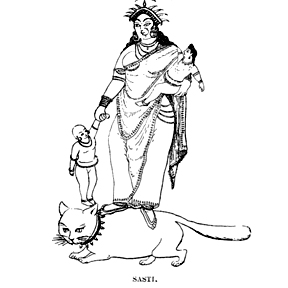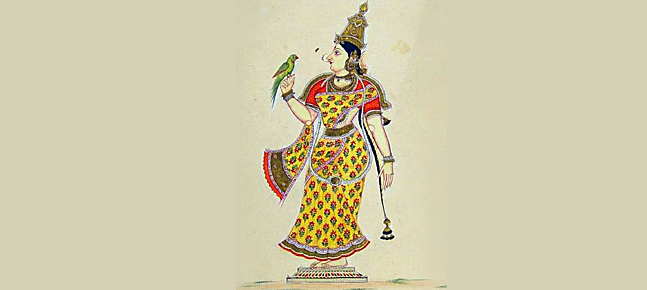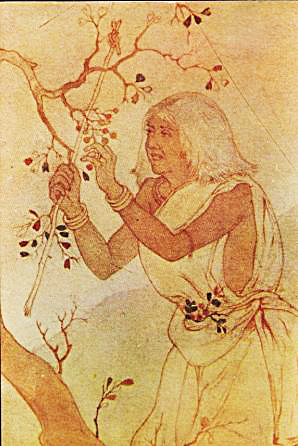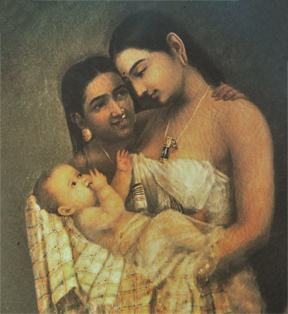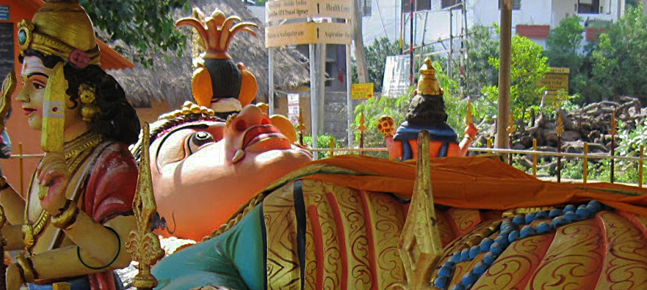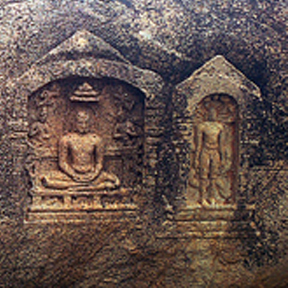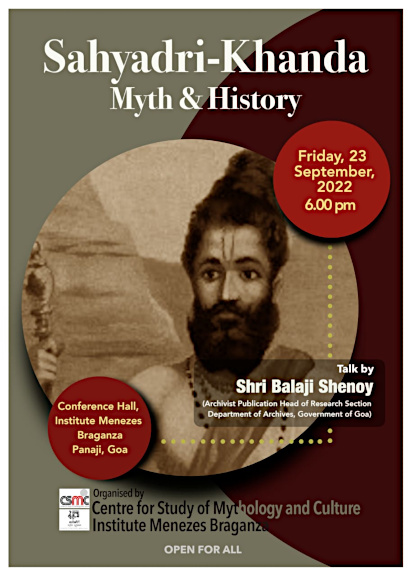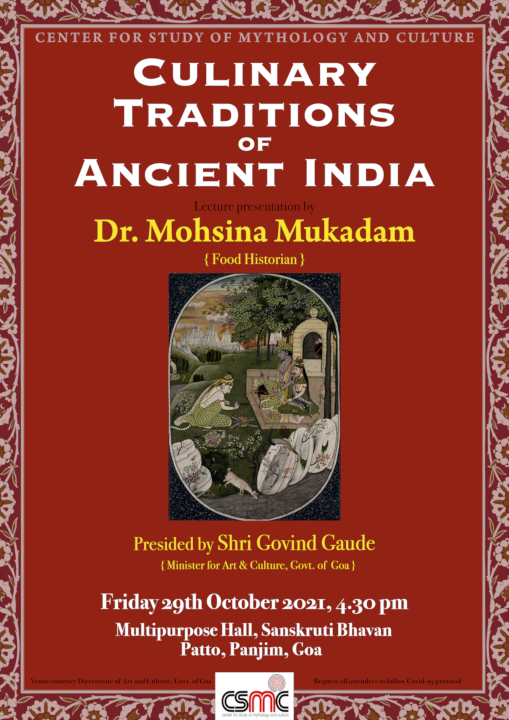Satti, Shati or Shashthi, is a goddess propitiated on the sixth day of the birth of a child in Goa, a small state on the western coast of India. It is believed if she is not propitiated appropriately she can harm a newborn child and the mother, even causing their death. Shashthi generally afflicts newbornchild and the mother in form of puerperal fever. Hence she needs to be pleased.*
According to common lore,a daughter in law stolesome food from her father-in-law’s home. Afraid of being humiliated by her in laws, she blamed it on a black cat, who was duly punished for stealing. Incidentally the cat was the vahanaof Satvai CHECK. The cat decided to take revenge for being wrongly accused and started stealing her children as soon as they were born. Cat would take away her children and give it to Satvai. She thus stole six of her sons. When the daughter in law realisedwhat was happening, she prayed to goddess Satvai and asked for forgiveness. Satvaithen advised the daughter in law to sculpt acat out of rice flour and tie this to theimage of the goddess with a sacred thread andworship both. Once the child is born the sacred thread should be tied to the new-born baby as a sign ofprotection of Satvai. This should be done with a vrata or a vow, whereby the new mother should keep a fast on the sixth day by drinking only milk and fruits.
It is also believed that Satti visits new born child on sixth day and writes his/her destiny on her forehead. A midwife (voizin) generally conducts the ritual of Satti on the sixth day of birth of newborn baby. A winnowing fan is placed in the chamber of the new mother. Rice, coconuts, betel leaves, betelnut, flowers, vermillion powder, lampblack and turmeric are placed uponthe winnowing fan. An oil lamp is lit for entire night. Women of the family sometimes play games like fugadi. And conch and empty vessels are blown to drive away the evil spirits. The purpose of these festivities is to keep the child awake through the night when Satti comes visiting to write his fate. It is believed that death follows Satvai and if he sees a sleeping baby then he may snatch him away.
———————————–
*Over time, the characterizations of Shashthi underwent a gradual evolution. Aforementioned folk traditions originating between the 10th and 5th centuries BCE associated the goddess with both positive and negative elements of fertility, birth, motherhood and childhood. However, between the 4th century BCE and the 5th century CE, a shift occurred in which Shashthi was increasingly depicted as a malevolent deity associated with the sufferings of mothers and children. The fifth century text KashyapaSamhita calls Shashthi by the epithet Jataharini (“one who steals the born”) and provides a list of the malevolent activities in which Shashthi is believed to engage, including her practice of stealing fetuses from the womb and devouring children on the sixth day following birth. For this reason, the text recommends that she be propitiated through worship in her honor on this day in the delivery room and on the sixth day of every fortnight thereafter.
Over the past 1500 years, the characterization of Shashthi gradually shifted toward that of a benevolent and protective figure. Shashthi’s evolution mirrors that of the demonessJaraof the Mahabharataand a similar Buddhist goddess, Hariti all of them are characterized in early texts as malevolent goddesses, but over the course of time these deities transformed from devourers of children into their saviors and protectors.
http://en.wikipedia.org/wiki/Shashthi
Story collected by: Dr. PandurangPhaldesai
Text Source: Goa: Folklore Studies by Dr. PandurangPhaldesai
Location : Goa


